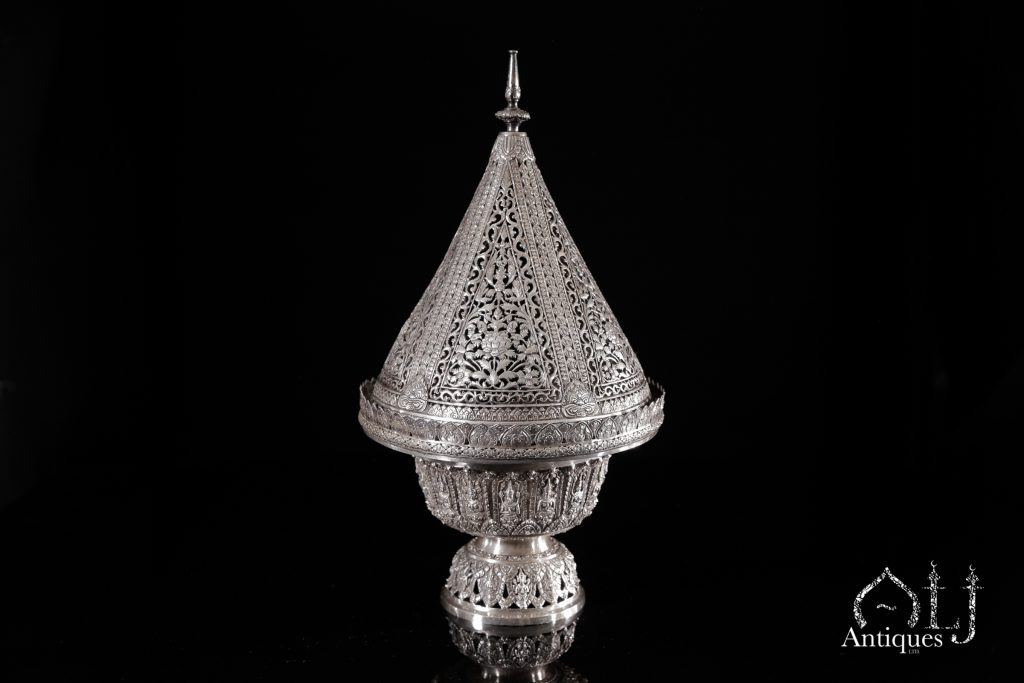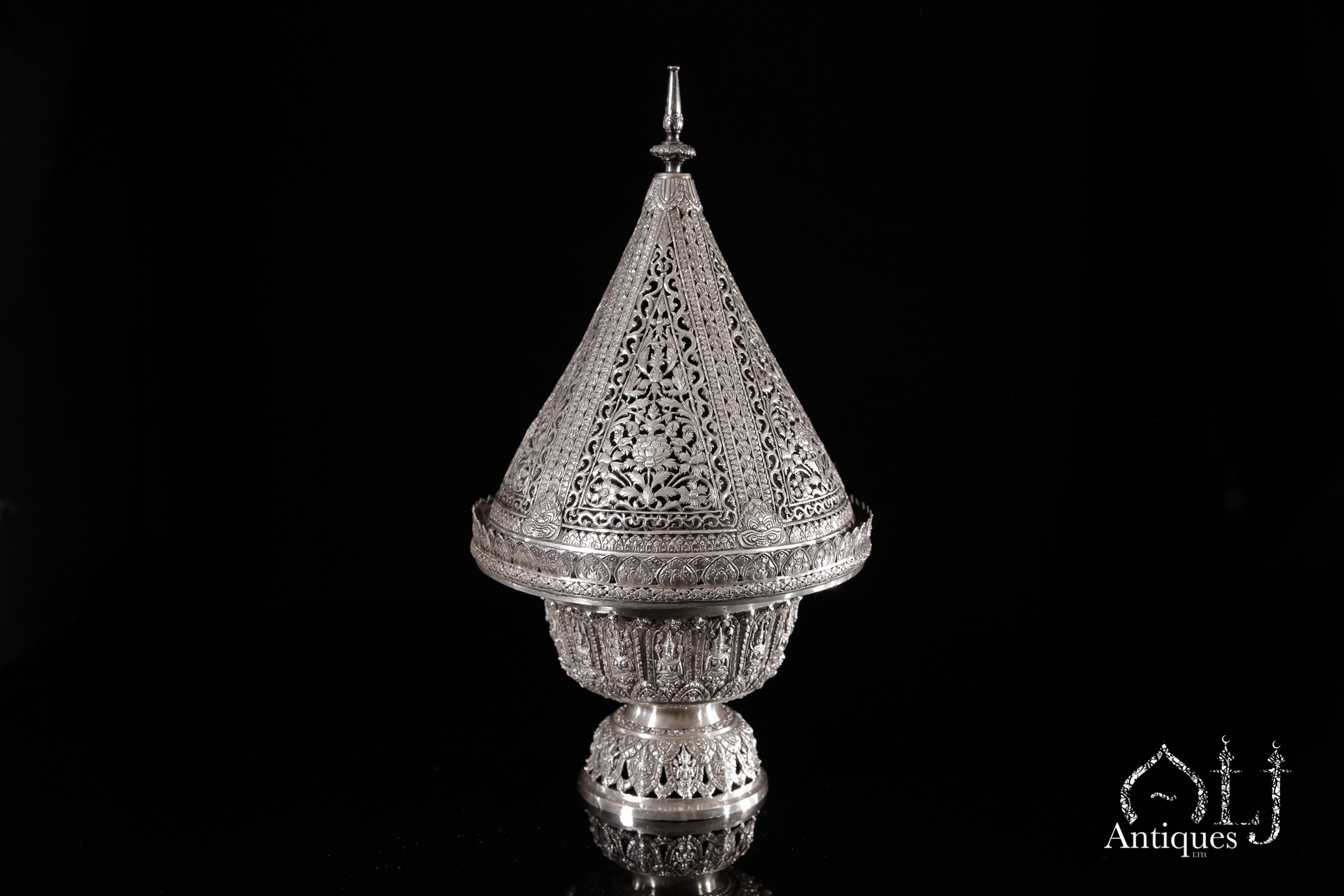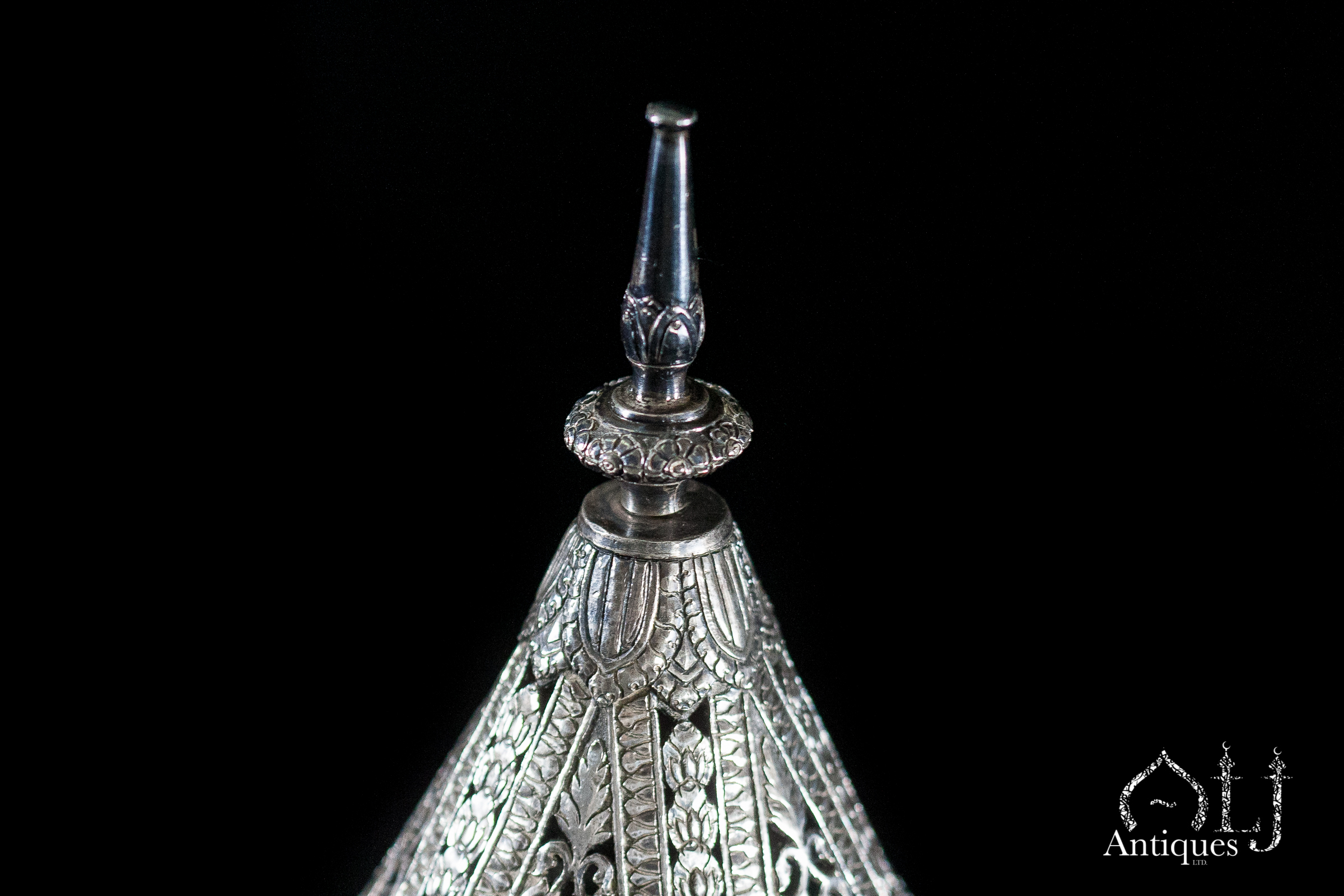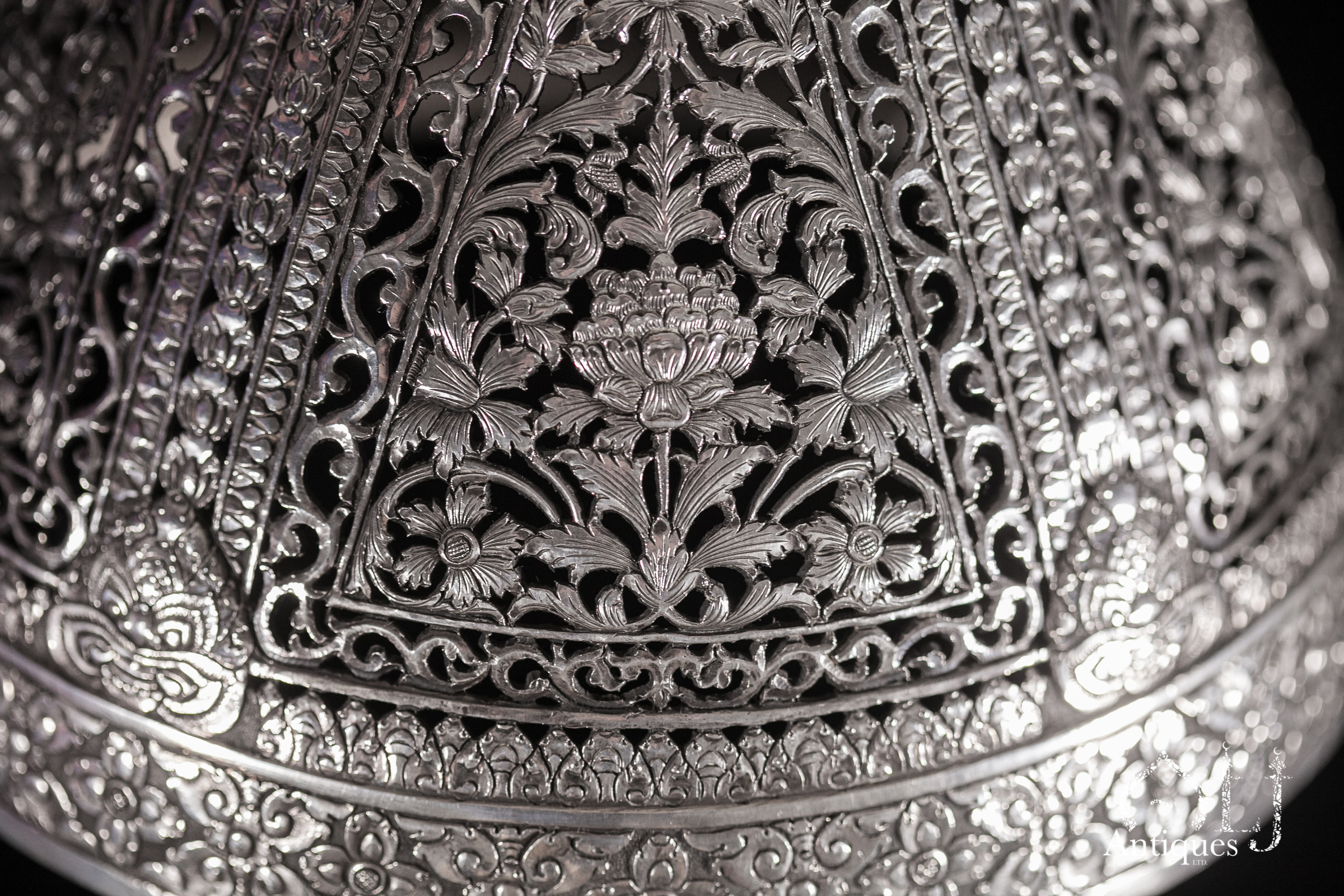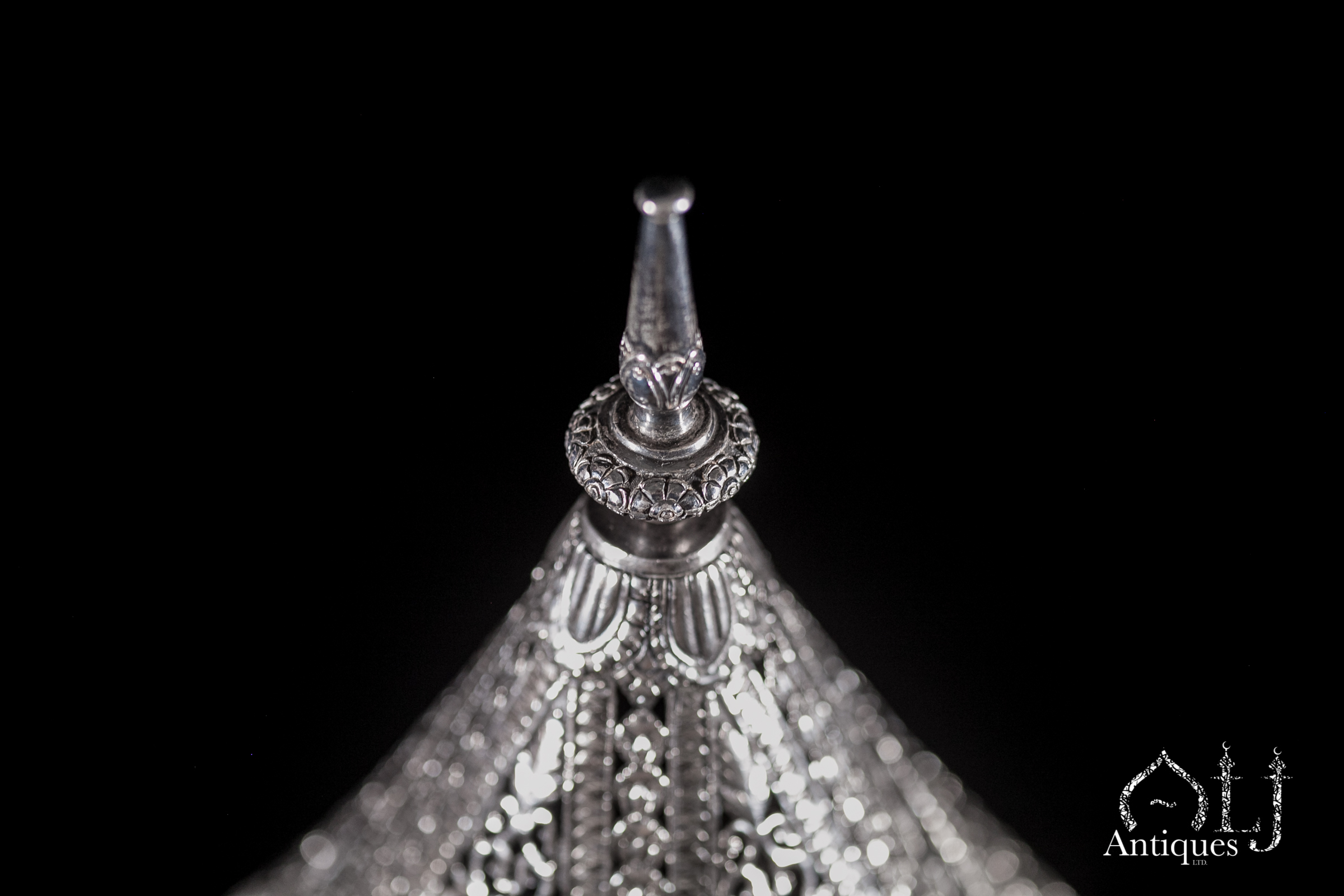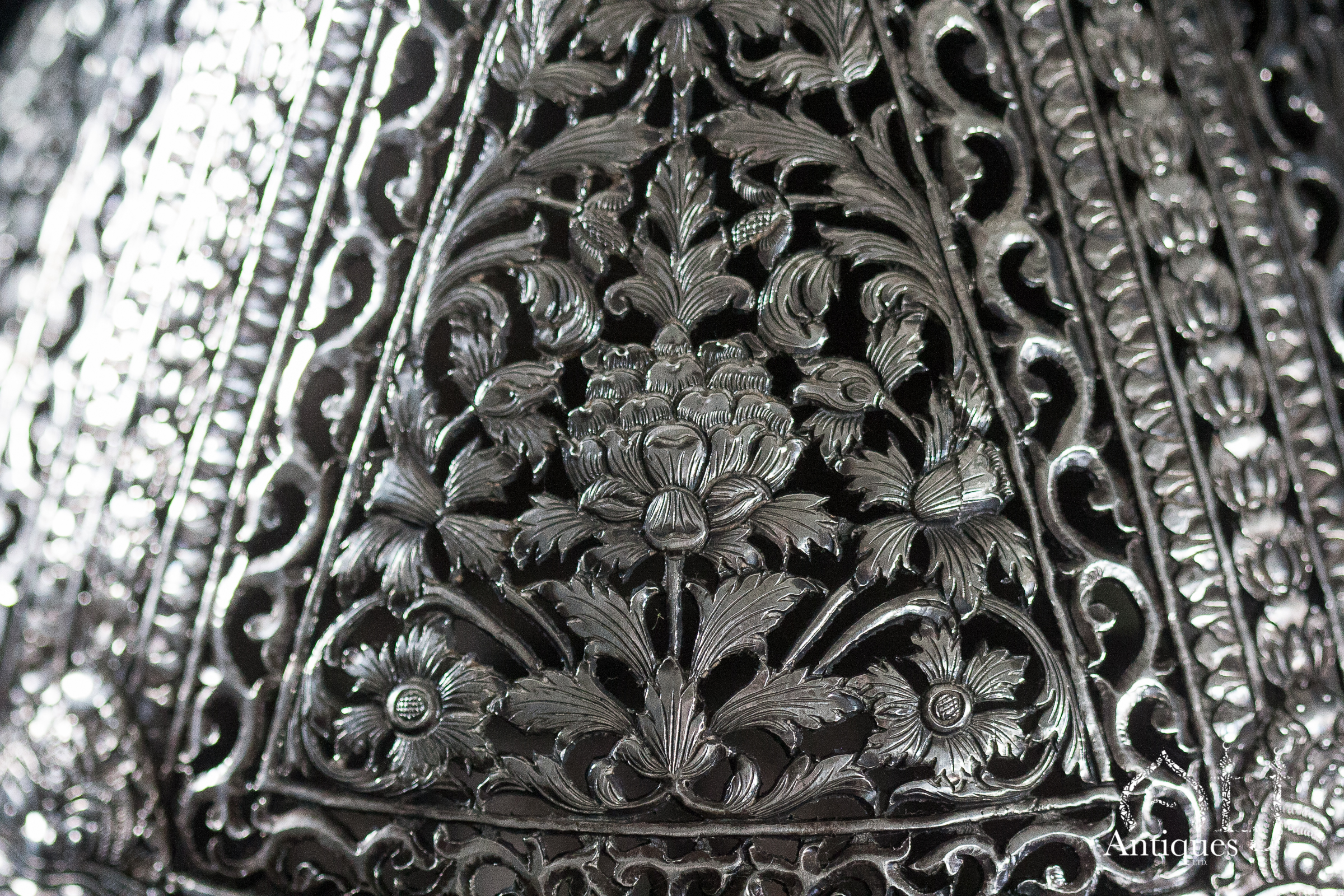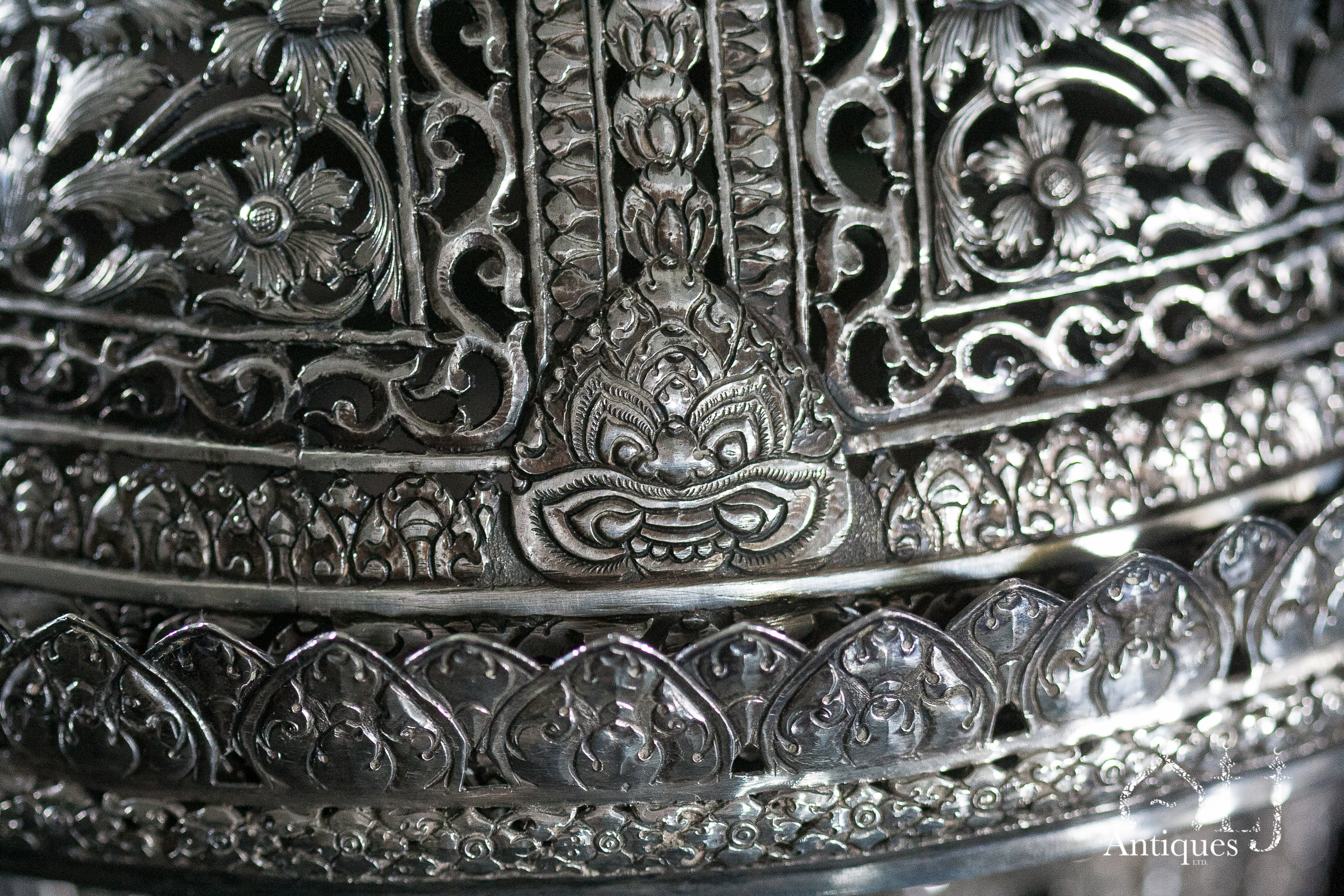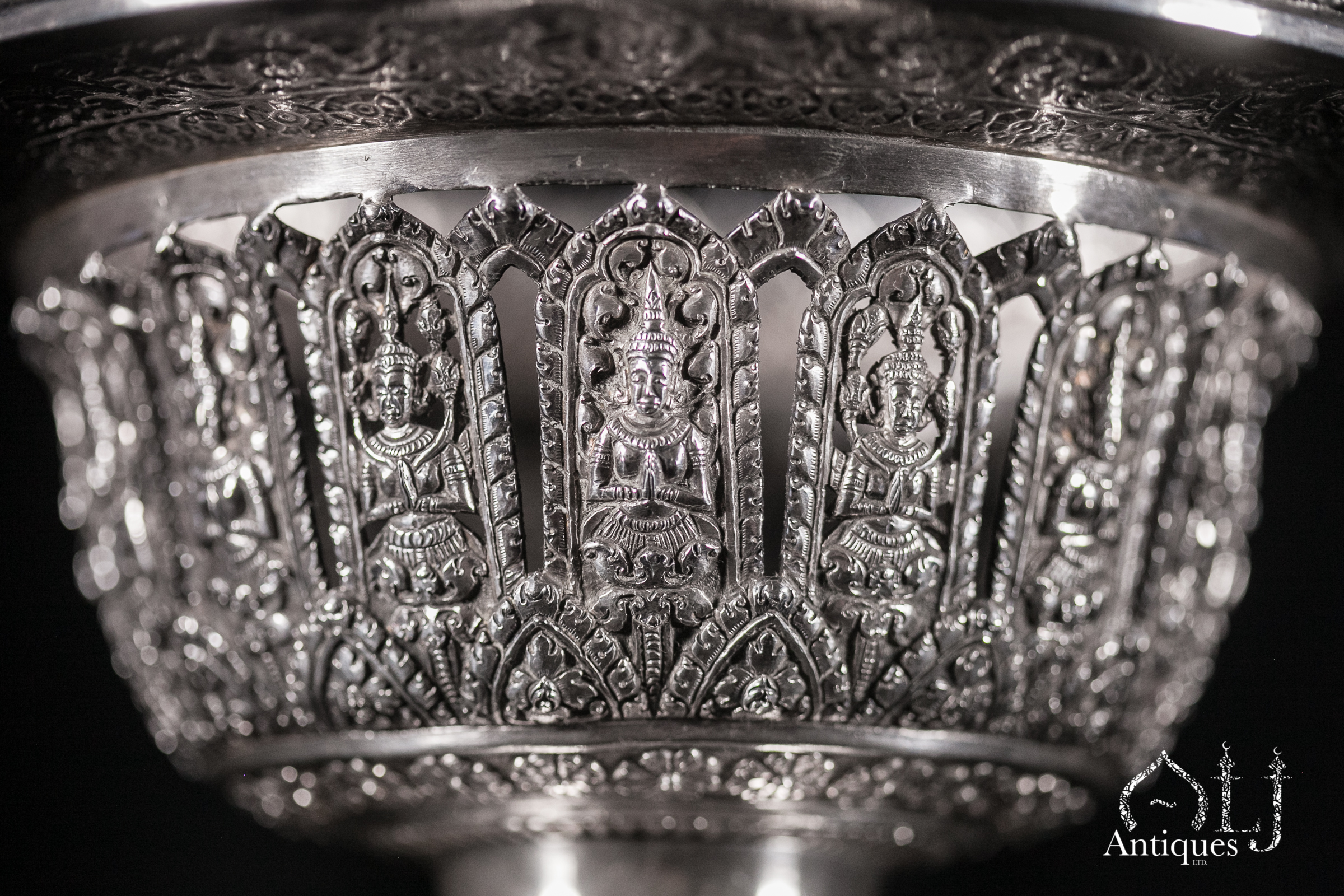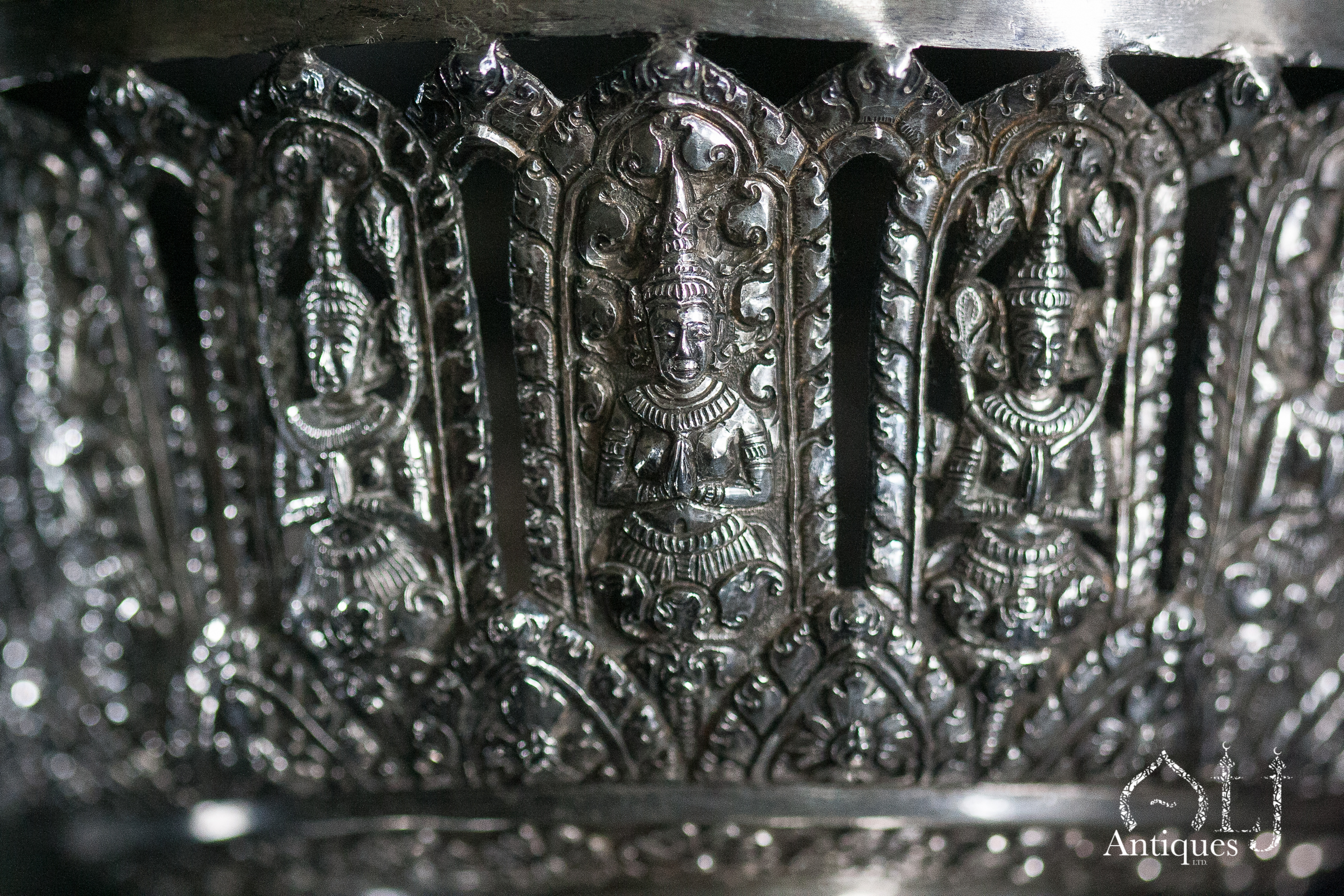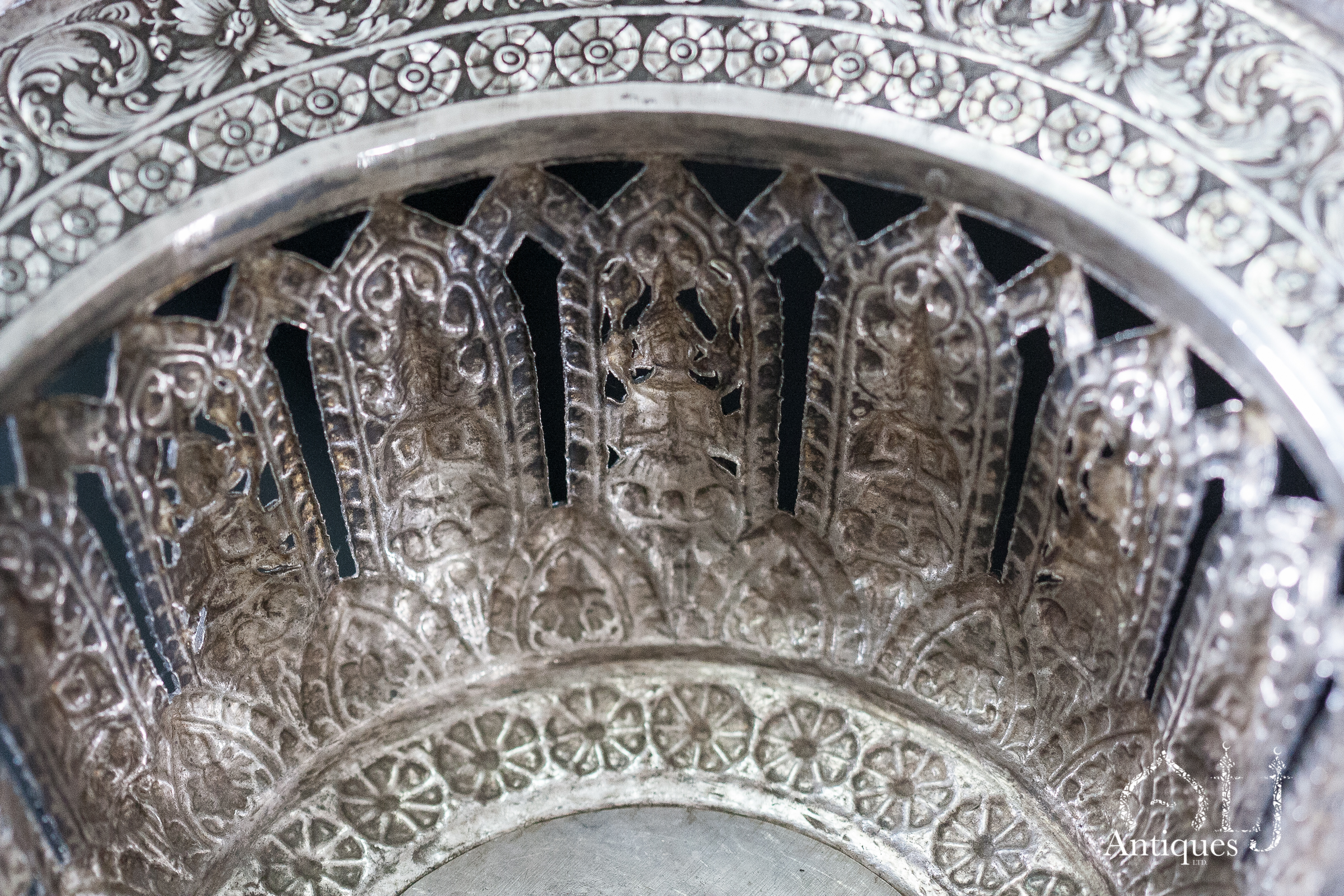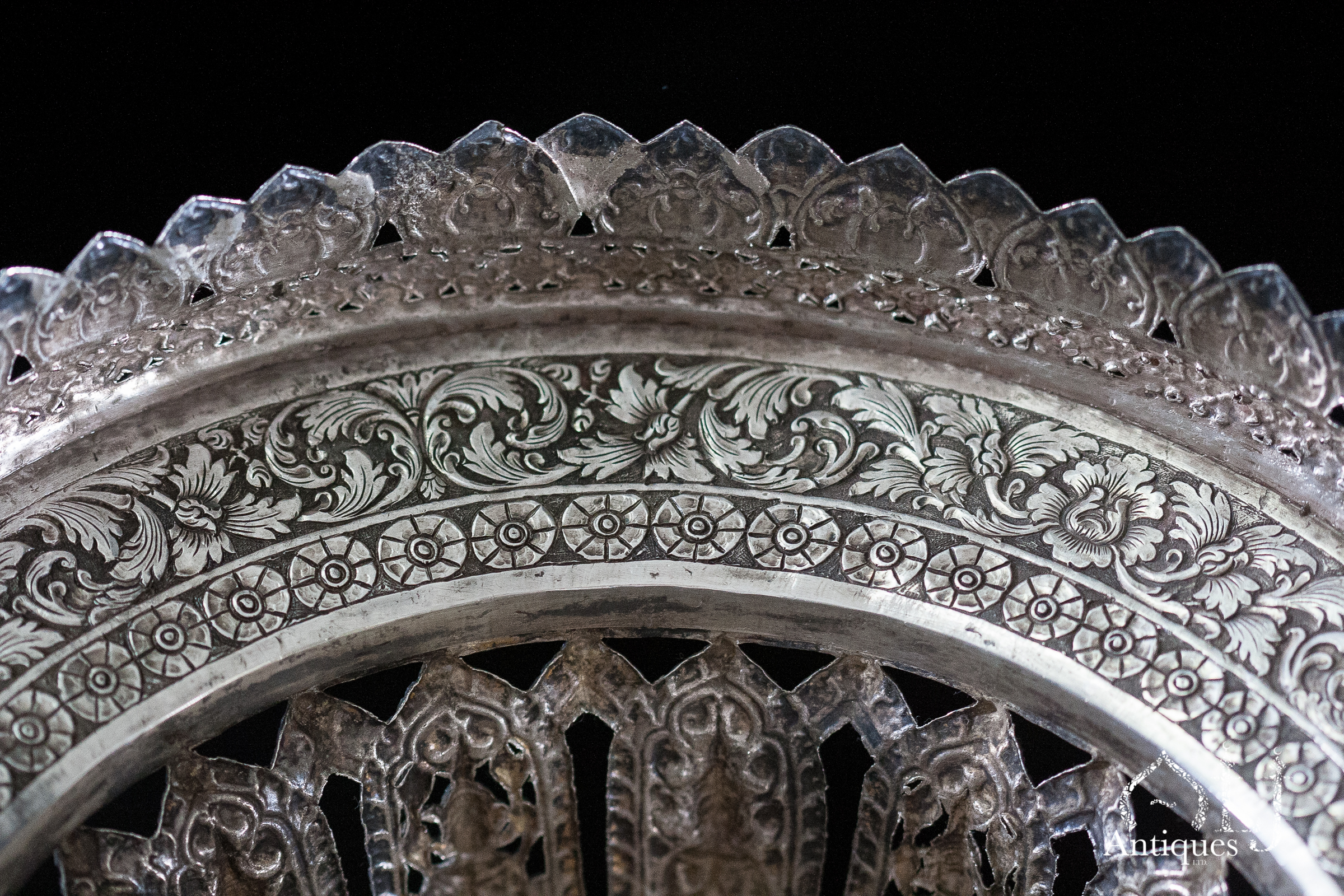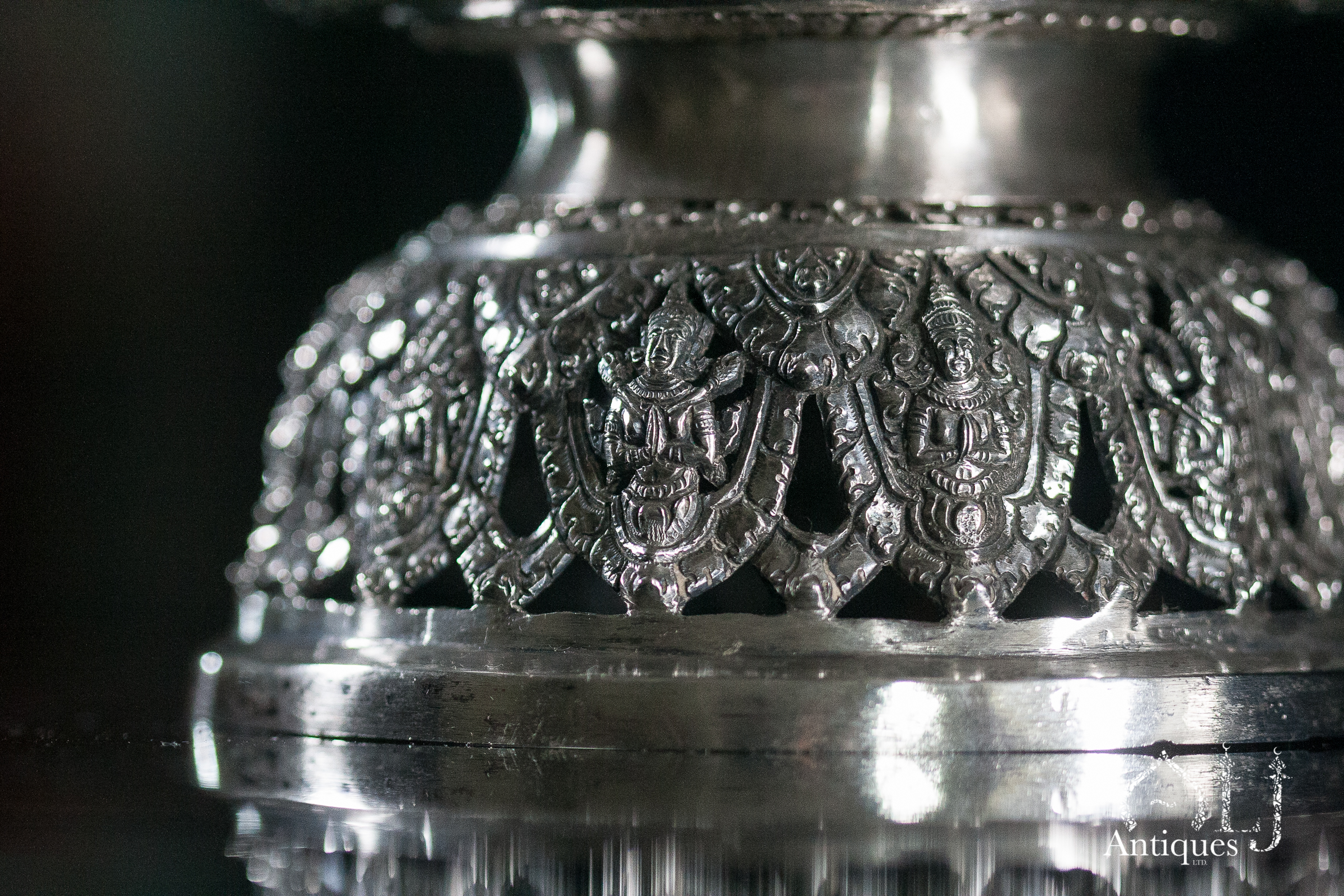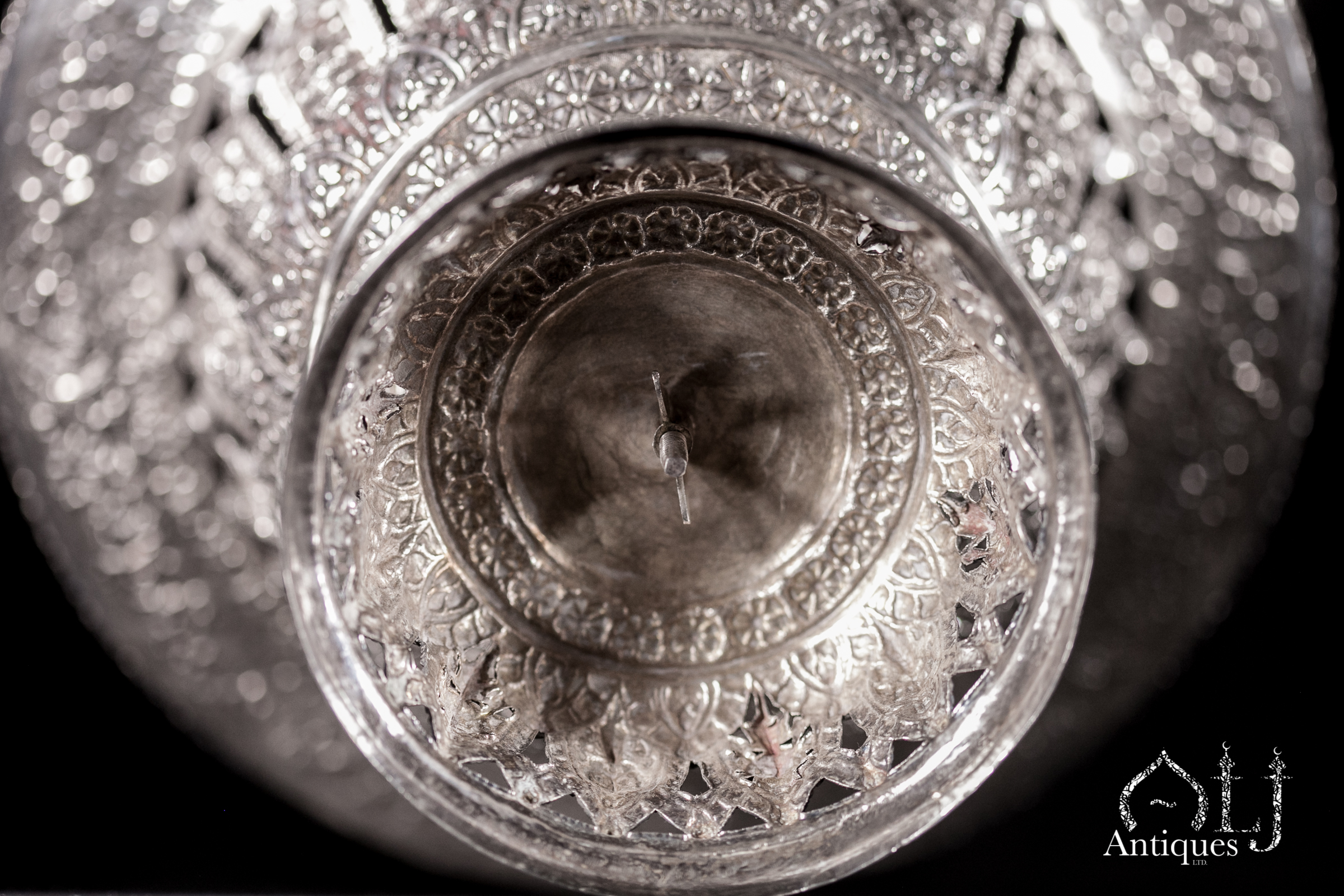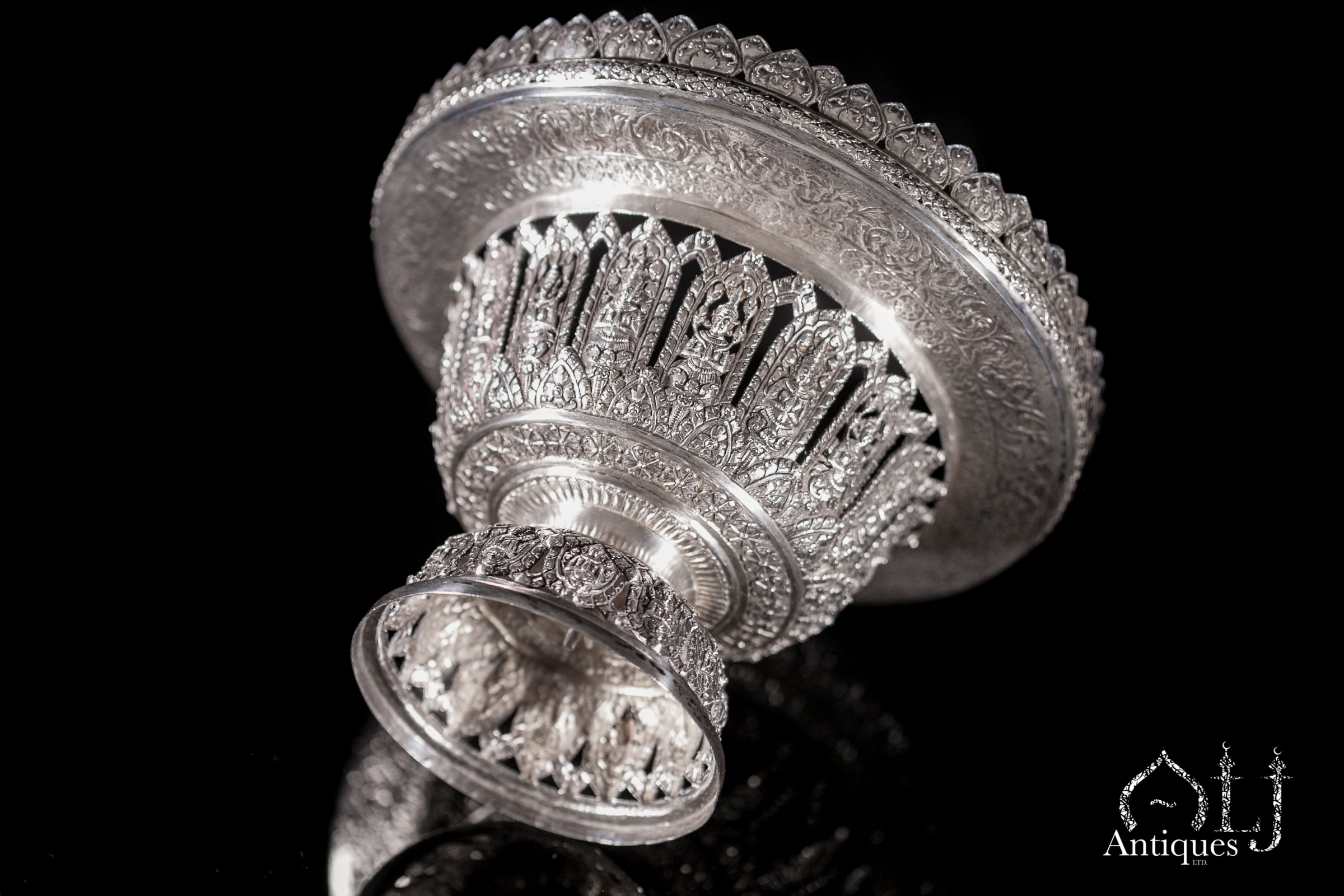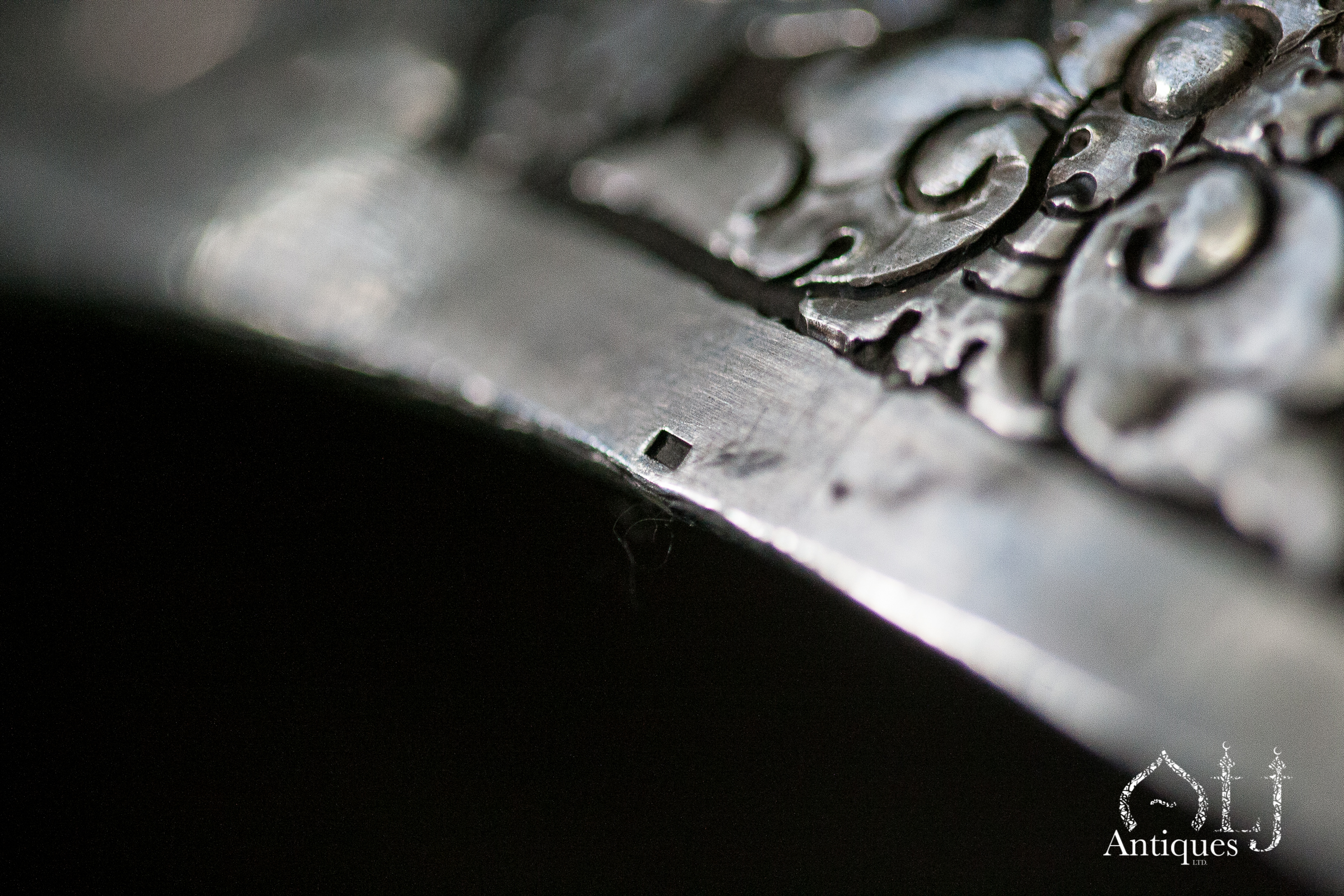Description
This is a formidable silver stand, comprised of a pedestal and a high lid of conical shape. The overall technique of working the silver in this piece implies piercing the surface, hammering volumes and chiselling profusely details to create detailed motifs. The shape and repoussé technique is closely related to the Cambodian crafts and shows certain influence of Thai silverwork.
The lid is formed of five main triangular panels rising from five Singhakala (lion mask) or Kurtimukha masks, each decorated with an array of scrolling foliage and encircling a crimson blossom. Bands of flower buds separate each of the triangular panels. An elongated finial with flowers decorates the upper part of the lid.
The rim of the chalice is decorated with Klieo bait het or cotton plant chain pattern.
The sides of the bowl are decorated with 16 plates depicting stiff leaves with Thephanom (Deva or sacred beings performing the Añjali Mudrā hand gesture and wearing high tiaras) whereas the base has 12 plates.
The Thepanom are part of the Thai and Cambodian traditions, it first came to earth when Buddha reached enlightenment and became their protector. Subsequently they became associated to the role of guardian of religious temples and featured prominently in sacred and royal artefacts.
The base of the chalice features similar lotus petals with repoussed flower motifs in it.
A plain band that grows into several cutout leaf motifs, each containing a Deva of the same style, attaches the foot. The flat base found in the interior of the stand is decorated with a scrolling kanote leaf design and eighth-petals flowers.
These stands were presented as an ex-voto in a temple or carried during religious festivals. Similar covered offering trays Royal Palace in Phnom Penh are illustrated in Le Palais di Roi du Cambodge. Indeed, this type of offering containers were usually part of the nobility or royal family, or even extremely wealthy families that could afford the cost of the pieces and wished to make an offering.
This piece can be linked to the region of Phnom Penh, where after 1900 the creation of an important school for fine arts and crafts worked on re-adapting old motifs. Indeed, by the arrival of the French to Cambodia in 1874, the working of silver was well established.
Silversmiths who were highly talented in objects body making, chasing, repousse, engravings, niello-inlay and gilding.
Indeed, the Royal court supported many of the artisans who were working in silver and gold. But by the 20th century the demand declined, with less interest for betel paraphernalia. This piece most likely pertains to the period circa 1900 when the influence of Thai Rakosian dynasty was still strong in the Cambodian region. The piece is preserved in a wonderful condition and features two rectangular hallmarks in the base rim.
Condition: Very good, minor wear and tear.
The object has probably European import silver marks to both the base and lid.
Dimensions 44cm of height
23.5cm diam. across width at widest point of body.
11.5cm diam. across width of base.
References:
Silverware Of South-east Asia, by Sylvia Fraser-Lu, Singapore Oxford University Press oxford New York 1989, ISBN:0 19 588898 7, Please see lot no. 28, A Bracelet from Lao decorated with the three-headed Erawan Elephant amidst floral scrollings illustrated on page 64.
For similar lidded stand see:
Khmer Silverwares, by Kong Vireak with support of the Rockefeller Foundation, Reyum Publishing, 2009, ISBN: 9789995055486, Please see lot Nos. 48, 49 & 50 illustrated on pages 46 & 47.
L’art Khamer, Reflet Des Civilisations D’Angkor, The Art of Khmer, reflection on the civilisations of Angkor, by Madeleine Giteau, Danielle Guerel, Photographs by Thomas Renaul, 1997 somogy edition/ ASA, Paris ISBN 2-85056-267-X, Please see the similar object been made for the royal palace of Phnom Penh illustrated on page 150, also notice similar shaped pedestal illustrated on page 143.
Julio Jeldres and Béatrix Dayde-Latham, Le Palais di Roi du Cambodge, Triad Publishing, 2002, p. 6 and 74.
For a similar leafed base in a stand see:
Naengnoi Suksri, The Grand Palace of Bangkok, River Books Press, 2010, p. 140 and 143.
William Warren, Arts and crafts of Thailand, Chronicle Books, 1996, p. 25- 30.
Naengnoi Punjabhan, Silverware in Thailand, Rerngrom Publishing Company, 1991, p. 139 and 173-77.

